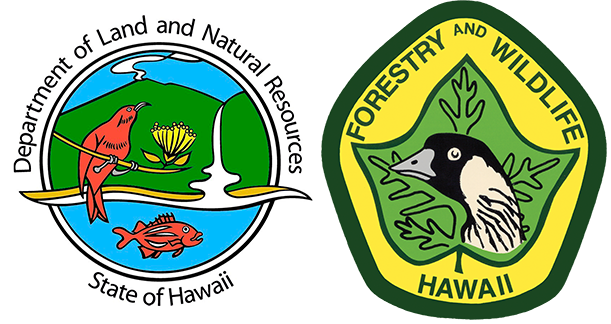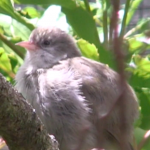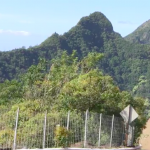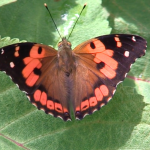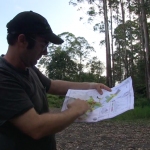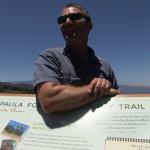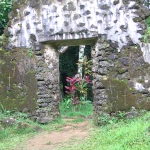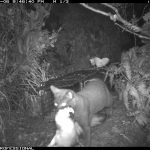(Lihue, Kauai) Hawaii’s forest birds are one of the best examples anywhere in the world, of what’s known as adaptive radiation. This means a few founding individual species evolved into a multitude of species. They’re also a key reason Hawaii holds the unenviable nickname of “extinction capitol of the world”, as many species have disappeared since the arrival of people to the islands. Most of the remaining are highly endangered and the subject of intense conservation efforts. Habitat loss and degradation, non-native predators, landscape-altering invasive weeds, and avian disease spread by mosquitoes have all contributed to the current predicament faced by these species.
featured
HONOLULU -- As global climate change progresses, what will happen to Hawai‘i’s aquifers and the ecosystem services which healthy forest watersheds provide? Will we be able to meet our future fresh water needs for drinking and agriculture?
(Molokai) – Scattered across an expansive coastline of valleys, sea cliffs, boulders, and beaches, is a problem that affects everyone. “It doesn’t matter the name you give it, marine debris, ocean litter, coastal trash, or where it came from,” says James Espaniola of the Department of Land and Natural Resources. “The best thing to do is to get busy and do something about it.” That is exactly what The Nature Conservancy Molokai (TNC-Molokai), Kalaupapa National Historical Park (KNHP) and the DLNR Division of Forestry and Wildlife’s (DOFAW) Natural Area Reserves System decided to do.
(Honolulu) – The deep, beautiful orange and black hue of Hawai’i’s official state insect is well known by visitors to native forests, and cultural practitioners. It is considered a critical pollinator for numerous native plants. The Kamehameha butterfly, like so many insects, plants, and animals in Hawai’i, is being crowded out of its traditional habitat by ever-encroaching human presence, the introduction of invasive predator species, and global climate change. Although the butterfly is historically known from all the main Hawaiian Islands (Kauaʻi, Oʻahu, Molokaʻi, Lanaʻi, Maui, and Hawai’i), it is no longer found in some areas where it used to be common and it appears to be declining. The Pulelehua Project includes an effort to map current populations of the Kamehameha butterfly using observations submitted by the public, combined with surveys of remote areas by scientists. Pulelehua is the Hawaiian word for butterfly.
KAHULUI - The Department of Land and Natural Resources (DLNR), Division of Forestry and Wildlife (DOFAW) will close the Kula Forest Reserve, Walpoli Access Road, Kahananui Forest Reserve – Papa‘anui Tract, and Polipoli Spring State Recreation Area from Monday, September 12, 2016, through Friday, September 23, 2016, to allow scheduled road repairs, road safety improvements, and fuel mitigation work (such as removing underbrush) and to be completed for both the unpaved and paved sections of the road.
(HILO) – Hawaii’s forestry industry is being encouraged to provide input for a possible Request for Proposals (RFP) for harvest and reforestation endeavors at the Waiakea Timber Management Area (WTMA) on Hawaii Island. The DLNR Division of Forestry and Wildlife (DOFAW) published a Request for Information (RFI) on July 21, 2016. It asks for guiding information on the resources of interest, markets, products, harvest practices, processing, transportation, financing, etc.
(HILO) – The yellow, white-and-gray palila, a highly endangered Hawaiian honeycreeper, is one of the world’s most isolated birds. It lives only in a small patch of māmane forest on the western slope of Mauna Kea volcano on Hawai‘i Island. With the opening today of the new Palila Forest Discovery Trail, visitors will be now able to see palila and other native species that call this distinctive ecosystem home.
WAILUKU -- The Department of Land and Natural Resources (DLNR) Division of Forestry and Wildlife (DOFAW), pursuant to Chapter 195D, Hawaiʻi Revised Statutes, will hold a public hearing to receive testimony on the Revised Draft Honuaʻula Habitat Conservation Plan (HCP). The hearing will be held July 27, 2016 starting at 5:30 at the J. Walter Cameron Center, 95 Mahalani St, Wailuku, HI 96793.
(HONOLULU) – Kaniakapupu, in the forest above Honolulu, in the Nuuanu district, is central to the story of modern Hawai‘i. Not only was it the summer palace of King Kamehameha III and Queen Kalama, it was the first government building built in western style with mortar and plaster. Completed in 1845, Kaniakapupu was the “scene of entertainment of foreign celebrities and the feasting of chiefs and commoners. The greatest was a luau attended by 10,000 celebrating Hawaiian Restoration Day in 1847,” (from a plaque erected on-site by the Commission on Historical Sites). Earlier it was the site of a notable heiau for Hawaiian royalty.
(LIHU'E) – Last week, researchers discovered the bodies of six endangered Hawaiian Petrels at a remote breeding colony in Hono o Na Pali Natural Area Reserve, Kauai. All had been dragged from their breeding burrows by feral cats and partially eaten, including one incident that was caught on a monitoring camera.
